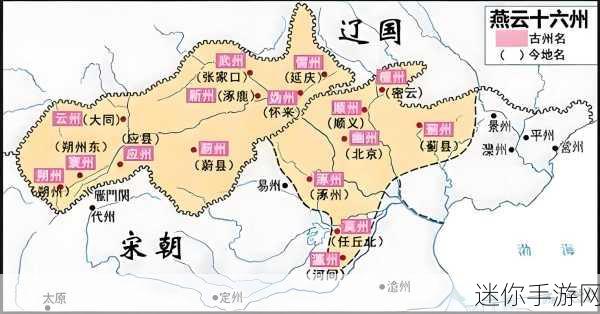燕云十六州的历史背景
燕云十六州是中国北方历史上一个重要的地理概念,它代表着辽代时期由契丹族统治的一块区域。此地虽小,却因其战略位置和丰富的资源,成为了多个民族争夺的重要目标。这一地区不仅仅有军事上的意义,其文化、经济发展也为后来的中华文明演变留下深远影响。
地域划分与组成
燕云十六州包括今河北、山西及内蒙古部分地区,共计16个主要城市或县。在这个范围内,有著名的城池如大同、宣化等,这些地方曾经是兵家必争之地。各个时代,不同民族对这片土地都产生过极大的影响,使得这里形成了多元文化交汇的独特景观。

政治与军事价值
这一地区自古以来就是军事重镇。从汉朝开始,直至明清,各种政权均希望能控制此地,以巩固自己的势力基础。其中,辽代建立之后,更是在燕云四周布置大量军队以防御南方敌人入侵。因此,在历史长河中,战火不断,对抗频繁。
经济社会的发展
除了战争带来的动荡外,这里的人们在农业、水利和手工业方面也展现出强烈的生存意志。例如,大规模灌溉工程使得农田产量提高,而丝织业则吸引商贾往来,使当地逐步富裕起来。通过这些活动,当时百姓虽然面临困苦,但依然努力寻求生活改善的方法,为未来积累财富.

Cultural Influence and Legacy
The cultural influences of the Yanyun Sixteen Prefectures are profound. Various ethnic groups, including Han Chinese, Khitan, and later Jurchens, contributed to a rich tapestry of traditions. Festivals celebrated here often showcase a blend of customs that represent different eras. The architectural styles found in temples and residences also echo this diversity, with features from various dynasties woven into their designs.
Sociopolitical Changes Over Time
The sociopolitical landscape shifted dramatically throughout history as new powers emerged. After the fall of the Liao dynasty, subsequent rulers attempted to assert control over these territories but faced resistance from local populations who had developed strong regional identities by then. This tug-of-war influenced governance approaches and policies implemented by both northern invaders and southern regimes alike.
A Modern Perspective on Yanyun's History
The legacy left behind by the events surrounding the Yan Yun Sixteen Prefectures can still be traced today through historical sites like ancient city walls or ruins scattered across regions once ruled fiercely contested by warriors long past.
Understanding its historical significance not only enriches one’s knowledge about China’s expansive past but also highlights how deeply intertwined geography is with political power dynamics in shaping societies throughout time.







